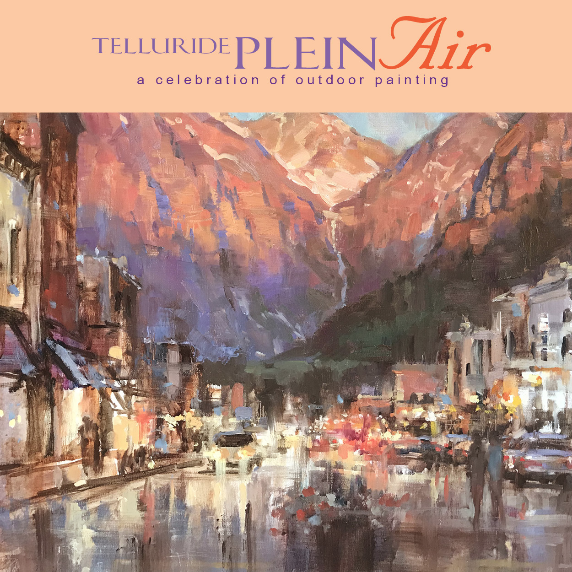
08 Sep Sheridan Arts Foundation: 17th Annual Telluride Plein Air, 9/18-9/19!
Telluride’s Sheridan Arts Foundation (SAF) is hosting the 17th annual Telluride Plein Air Festival on September 18 and 19, 10 am-6 pm, in Elks Park and the Sheridan Opera House courtyard. Participating artists are spending one week prior to the show painting outdoors, en plein air, to capture the light, color, and unique character of the breathtaking Telluride region.
For a complete schedule of events, artist information, painting locations, etc., please visit the Telluride Plein Air website at www.telluridepleinair.com or visit the Sheridan Arts Foundation website at sheridanoperahouse.com.

The SAF normally hosts Telluride Plein Air over the Fourth of July weekend, but due to the onset of COVID-19 the event was postponed and sized down. Instead of the usual 25 artists, the SAF is now bringing in 11 nationally renowned plein air painters who will spend five days in and around Telluride capturing the area’s beauty in the open air. This will be the first time the festival has been held as Telluride’s landscape changes into its vibrant fall cloak.
Telluride Plein Air’s participating artists were selected through a juried process in which applicants submitted images and a biography which were then reviewed by a panel of artists, gallery owners and educators.
For the duration of the sale, each artists will follow the CDC guidelines, wearing a mask at all times. Their booths will be at least six feet apart, and the SAF is encouraging the painters to keep their distance from guests and potential customers.
The Sheridan Arts Foundation created Telluride Plein Air 17 years ago to benefit community programming and the continual upkeep and restoration at the historic Sheridan Opera House. The Sheridan Opera House has provided quality entertainment to Telluride since 1913. Profits from the artwork will be split with 40 percent benefiting the SAF; 60 percent retained by the artists. With the halt of virtually all of the Sheridan Opera House’s programming due to COVID-19, this event is more crucial than ever to keeping the Sheridan Opera House’s doors open.
WHEN: September 18 & 19, 2020, 10-6 PM
WHERE: Elks Park & Oak Street Park, Telluride, CO.
2020 ARTISTS:
Marc Anderson, WI; Kirsten Anderson Nielson, CA; Suzie Baker, TX; Jill Banks, VA; Allen Brockbank, UT; David Dallison, IL; Jody Kauflin, CO; Tammie Lane, CO; Alison Menke, MD; Bill Meuser, CO; Tara Will, MD.


Sorry, the comment form is closed at this time.